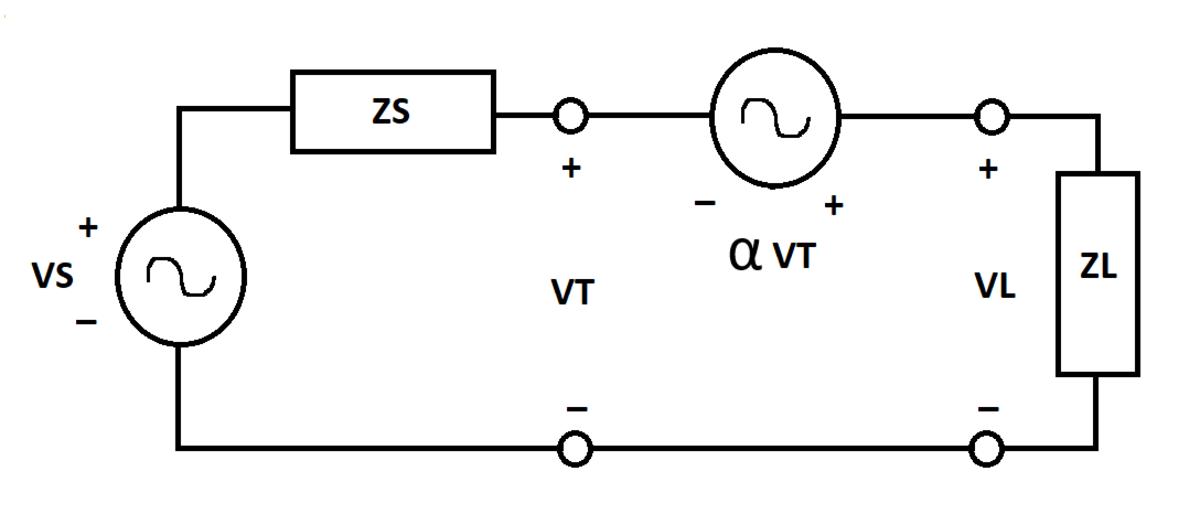Voltage-Controlled Voltage Source
An A C voltage source V S has internal impedance Z S . The terminal voltage of this source is V T . Another voltage source is connected in series, and supplies a voltage α V T , where α is a complex constant. Load impedance Z L completes the circuit.
What is the magnitude of the load voltage V L ?
Details and Assumptions:
1)
V
S
=
1
0
+
j
0
volts
2)
Z
S
=
0
+
j
3
Ω
3)
Z
L
=
5
+
j
0
Ω
4)
α
=
0
.
2
+
j
0
.
3
5)
j
=
−
1

The answer is 11.335.
This section requires Javascript.
You are seeing this because something didn't load right. We suggest you, (a) try
refreshing the page, (b) enabling javascript if it is disabled on your browser and,
finally, (c)
loading the
non-javascript version of this page
. We're sorry about the hassle.
2 solutions
Nice method
@Steven Chase
How are you ? Are you fine ?
Please provide me a anayltical solution whenever you are free.
 .
.
Thanks in advance
The negative terminal of the source S is considered to be at 0 V . Keeping this in mind, the circuit equations are:
− V S + I Z S − α V T + I Z L = 0 V S − V T = I Z S I Z L = V L
Writing these equations in a matrix form leads to:
[ Z S + Z L Z S − α 1 ] [ I V T ] = [ V S V S ] ⟹ V L = [ Z L 0 ] [ I V T ] = [ Z L 0 ] [ Z S + Z L Z S − α 1 ] − 1 [ V S V S ]
Finally:
∣ V L ∣ = ∣ ∣ ∣ ∣ ∣ [ Z L 0 ] [ Z S + Z L Z S − α 1 ] − 1 [ V S V S ] ∣ ∣ ∣ ∣ ∣ ≈ 1 1 . 3 3 5
@Karan Chatrath how are you ?
please give me a anayltical solution of this below problem.whenever you are free.Thanks in advance

There are several ways to present the solution. My preference is to invoke continuity of current in the circuit (since everything is in series).
Z S V S − V T = Z L V T + α V T
Solve that equation for V T , and then V L = V T + α V T